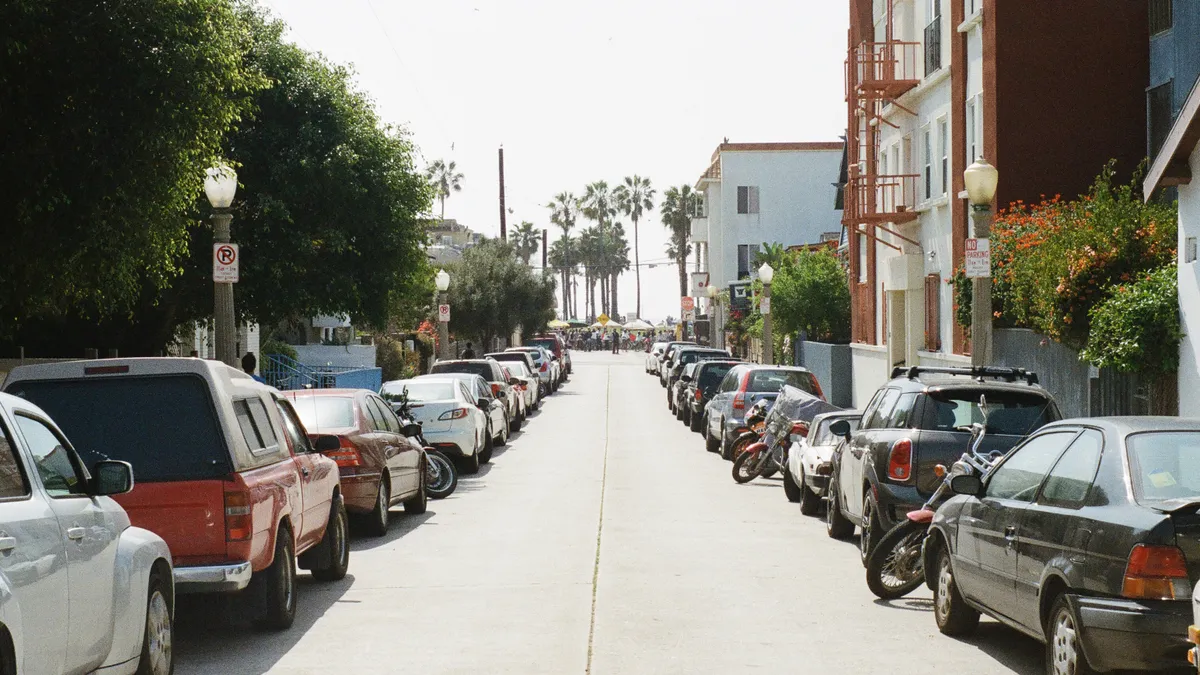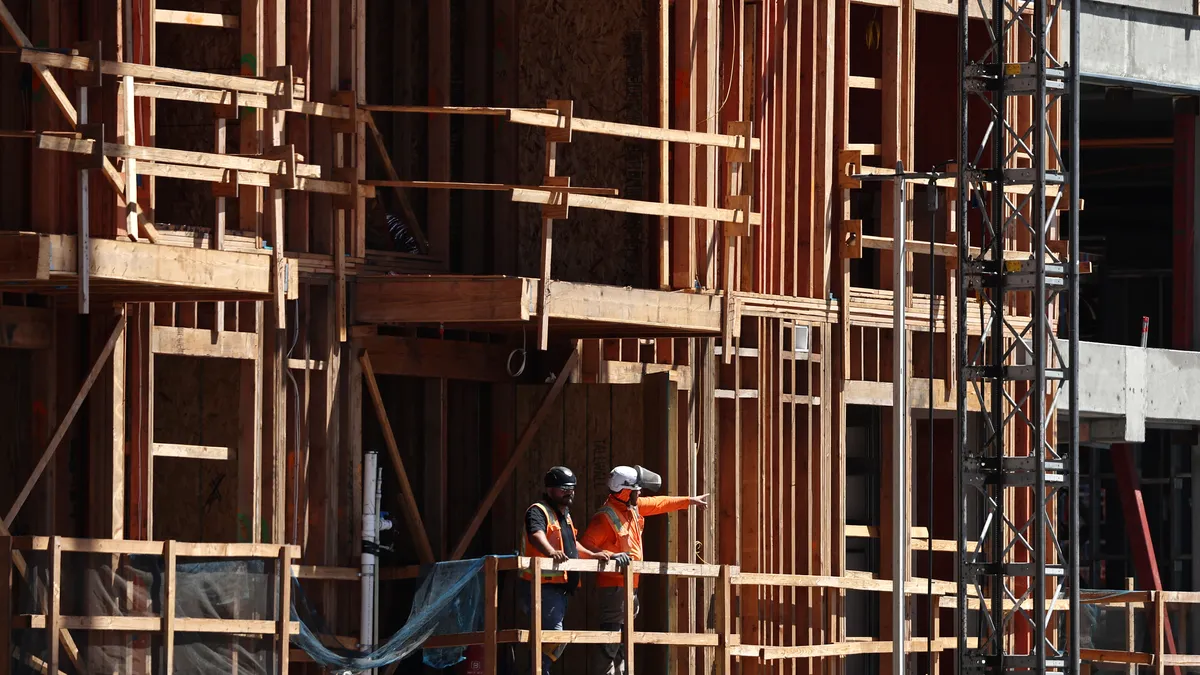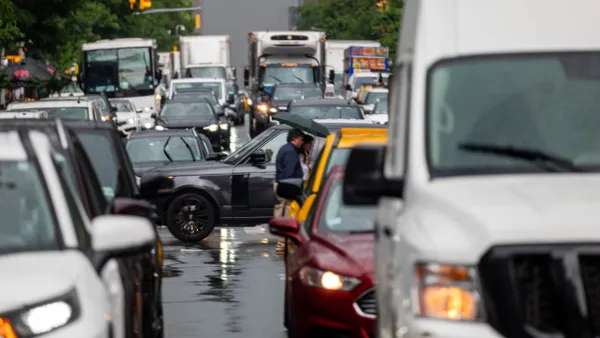Dive Brief:
- San Francisco, Washington, D.C. and Fort Lauderdale, FL are among a number of cities reconsidering how to optimize curb space on city streets, according to CNN.
- The rise in e-commerce deliveries, bike lanes, and ride-sharing services that consistently pull over to pick up or drop off passengers have sparked these cities and others to look into removing curbside parking in some areas, or turn that parking into pull-over spots for service vehicles.
- It is possible that some cities would charge ride-sharing services to access these pull-over zones to account for lost parking revenue from the spots. This would need to be tested, along with other trials, in order to develop best practices.
Dive Insight:
Earlier this month, San Francisco Mayor Ed Lee announced designated pick-up and drop-off spots for Uber, Lyft and other ride-sharing services, which would use a geofencing feature on the app to detect which painted curbs are assigned for ride-hailing.
Making #SF streets safer with designated pick up and drops off spots is the goal behind our pilot program with @Uber and @lyft. pic.twitter.com/HjKp0AstgS
— Mayor Ed Lee (@mayoredlee) November 8, 2017
These pilot programs, however, are about more than just Uber and Lyft. They're about making personal pick-ups and drop-offs, as well as taxi riding, more safe and convenient for pedestrians, drivers and bicyclists, according to Lyft General Manager Steve Taylor. At a recent discussion on smart cities, Taylor explained that Washington, D.C. is working on a similar pilot to San Francisco's, aimed at replacing 60 parking spots along Connecticut Ave. with designated pull-over zones from 10 p.m. to 4 a.m., Thursday, Friday and Saturday nights.
"Right now, you have [cars] pulling up, you have folks who are inebriated coming between cars and getting into traffic accidents, pedestrians are getting hit, and these cars are getting ticketed," he said. "While it's not a sexy thing ... it's a very simple, low-cost, low-risk way of facilitating paving the way for autonomous vehicles."
While it's a bit early to start redesigning city streets for AVs, it's strategic to at least consider those vehicles in upcoming plans, instead of waiting until AVs are already deployed and used consistently. Self-driving cars will not need to park for long periods of time — their intended mainstream purpose is to pick-up and drop-off citizens as needed, eliminating car ownership — therefore the idea of a short-term pull-over zone will slowly become more common as time progresses. By testing out this "low-cost, low-risk" pilot in some cities, Lyft and other stakeholders are getting ahead of the game and paving the way for future city design and optimization.











